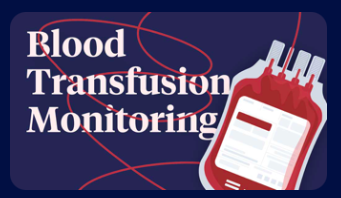The transfusion of blood and blood products is a life-saving intervention. However, there are risks of adverse events associated with the donation of blood and its components, and with the transfusion of blood and blood products to patients.
Adverse events include all reactions, incidents, near misses, errors, deviations from standard operating procedures and accidents associated with blood donation and transfusion. Hemovigilance can identify transfusion hazards and demonstrate the effectiveness of interventions.
Definition of Hemovigilance:
Hemovigilance is a set of surveillance procedures covering the entire transfusion chain, from the donation and processing of blood and its components, to their provision and transfusion to patients and their follow-up. It includes the monitoring, reporting, investigation and analysis of adverse events related to the donation, processing and transfusion of blood, and taking actions to prevent their occurrence or recurrence.
Hemovigilance includes methods for identifying errors, adverse events, and reactions, such as alert systems, complaint investigation, traceability systems, notification systems, and application controls.
Goal of Hemovigilance:
- Continuous quality improvement of the transfusion chain through corrective and preventive actions to improve donor and patient safety, improve transfusion appropriateness, and reduce wastage.
- The ultimate goal of a hemovigilance system is to improve the safety of blood transfusion.
Aim of hemovigilance:
- To determine the cause of unexpected situations in blood transfusion and to prevent their reoccurrence, and as a result, to ensure safe blood transfusion. For this purpose, issues such as inadequate blood supply structure, insufficient blood supply, increased need, unequal distribution, weak quality systems, risks of infection transmitted by transfusion, and inappropriate use of blood products are priorities in ensuring blood transfusion safety.
Haemovigilance systems can improve donor and patient safety by:
- identifying trends in adverse events and reactions; determining root causes and raising awareness
- providing evidence for the development and amendment of policies to improve practices
- guiding research
- functioning as a rapid alert and early warning of emerging risks
- achieving and demonstrating improvement.
Brief History:
- The first official studies on hemovigilance started with the establishment of the blood monitoring system by the “Blood Transfusion Committees” in France in 1991.
- It was implemented in Canada in 1997 after the Krever report.
- With the establishment of SHOT (serious hazards of transfusion) in 1997 in England, notifications of hemovigilance began.
- With the establishment of EHN (European Haemovigilance Network) in 1998, an international analysis platform was formed.
- The European Blood Directive 2002/98/EC was published on 8 February 2003. In this directive, on October 1, 2005, regulations regarding traceability, serious side effects, and blood institutions quality and standards were made. In 2005, many countries outside of Europe developed their national hemovigilance systems and became involved in this communication network. In 2006, a hemovigilance program was established in the USA with the AABB (American Association of Blood Banks).
- Since 2009, hemovigilance information exchange has been carried out at the international level with INH (International Hemovigilance Network).
- A centralized hemovigilance program to assure patient safety and to promote public health has been launched for the first time in India on Dec 10, 2012.
References:
https://www.nib.gov.in/hvp_guidance_doc.aspx
https://www.ncbi.nlm.nih.gov/pmc/articles/PMC3613669/
https://www.ncbi.nlm.nih.gov/pmc/articles/PMC3439750/

Leave a Reply